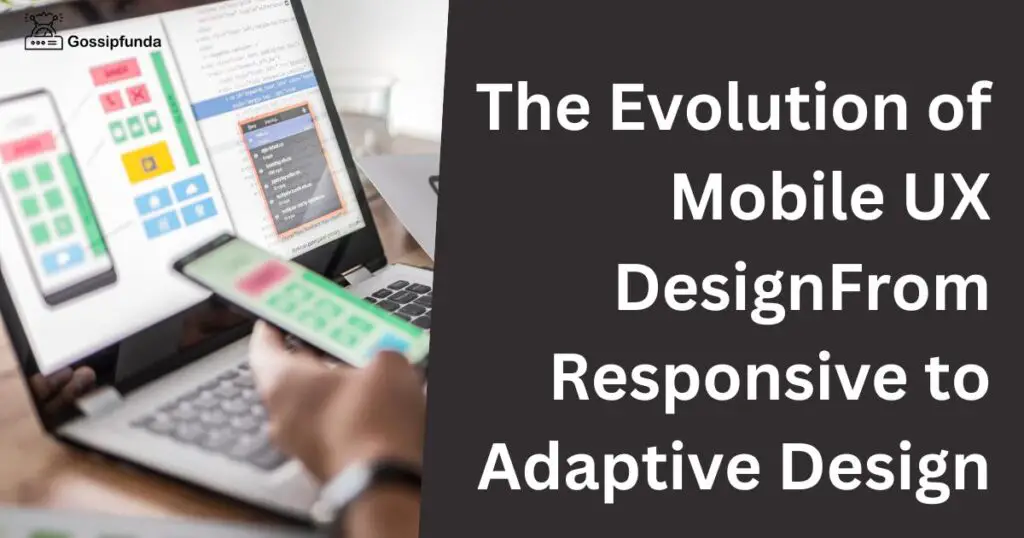Today, mobile phones have become an essential need not only for communication but also for entertainment, access to information, and more. That’s why websites, apps, games, and other digital products – which are traditionally designed for computer access – must be made available on mobile phones.
According to Think with Google, 75% of mobile users prefer a mobile-friendly site, and 67% of them will likely purchase a product or service from a mobile-friendly site. These statistics show the importance of mobile UX design in today’s world.
Most companies, especially those involved in product design, look to hire user experience designer to incorporate mobile UX design into their products and services. Mobile UX design has come a long way thanks to UX design agencies’ efforts to adapt to the demands and changes in user trends and behaviors. So now, let’s look at the evolution of mobile UX design from responsive to adaptive design.

The Rise of Responsive Design
According to a Statista report, mobile devices alone generated 59.16% of the global website traffic in 2022. Thus UX designers for websites need to create web pages that are easily accessible for mobile phones.
But before smartphones with internet capabilities were introduced, websites were designed for computer access only. But with the rise of smartphones and the number of users accessing the internet through mobile devices, websites needed to be more mobile-friendly.
That’s where responsive design comes into play. It is the process of creating mobile-friendly websites that adjust according to the user’s device – may it be a desktop, tablet, mobile phone, or other screen device.
Responsive design uses CSS media queries to be able to automatically adapt the website’s design and layout to the screen size of the device. Ethan Marcotte, a web designer, introduced this design process for websites in 2010. To further understand responsive design’s development, read this article written by the proponent.
Listed below are some of the pros and cons of responsive design:
Pros:
- It accommodates a wide variety of screen sizes, especially non-standard ones.
- It can improve search engine ranking.
- It optimizes websites across devices, which is preferred for sites with a lot of pages or created from scratch.
Cons:
- It requires more intense coding.
- Since the layout may not best fit some devices, it does not guarantee the best user experience.
- It may result in slower website loading.
The Rise of Adaptive Design
Adaptive design is the process of designing different website layouts based on different screen sizes. Responsive design is like a one-size-fits-all solution, while adaptive design adapts depending on the common screen sizes – usually 320px, 480px, 760px, 960px, 1200px, and 1600px.
Aaron Gustafson, who managed the Web Standards Project, coined the adaptive web design in his published book in 2011. Now, it has hugely evolved in the web space as businesses desire to control how their website visitors see their content on smartphones.
One of the main reasons for the rise of adaptive design is to provide a better UX for mobile device users. However, as designing for each screen size can be time-consuming, UX designers maximize user analytics to find which screen size site visitors use the most.
For instance, the user analytics showed that most site visitors use iPad and iPhone users. So the web or UX designer should prioritize the screen sizes for iPad and iPhone to ensure the optimum user experience for the website visitors.
Listed below are some of the pros and cons of adaptive design:
Pros:
- Web developers find it easier to implement.
- It creates a tailored experience for each device used.
- Websites tend to load faster than those with responsive design.
Cons:
- It does not cover uncommon screen sizes.
- It takes longer to build
- If there are inconsistencies in content across devices, it may affect search engine ranking.
Final Thoughts
Today, the majority of the population uses mobile phones for accessing information, communication, and entertainment. The rise of smartphones has resulted in the development of responsive design and adaptive design in mobile UX design.
Responsive design is a one-size-fits-all approach that allows websites to adjust according to the screen size. Meanwhile, the adaptive design creates different website layouts dedicated to common screen devices. Both mobile UX designs have pros and cons. But fortunately, UX designers are here to guide businesses and companies with their mobile websites.
I am passionate about my work. Because I love what I do, I have a steady source of motivation that drives me to do my best.
I’m not comfortable with settling, and I’m always looking for an opportunity to do better and achieve greatness. I have a keen interest in the technical field. Apart from this, I am a social media influencer.


